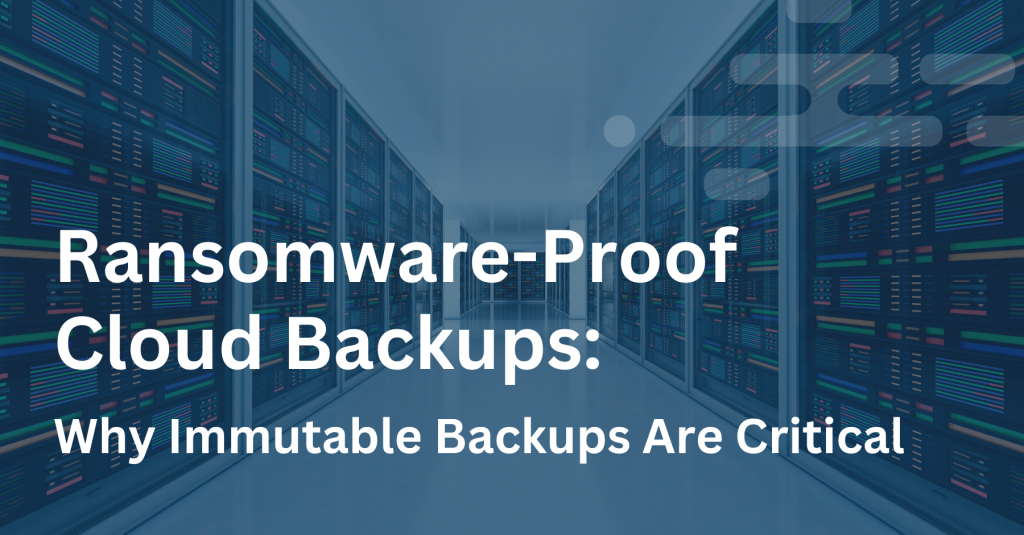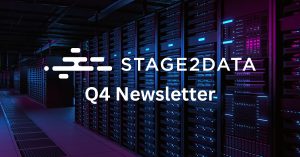Ransomware attacks keep growing in both frequency and sophistication. Criminals are now specifically targeting backup repositories, counting on the fact that many organizations take backups for granted. You might think your data is protected because you have cloud backups, but that assumption can lead to catastrophic loss when modern ransomware finds ways to breach or destroy backup copies. Traditional cloud backup often lacks features that block tampering or deletion. That gap leaves your business exposed during a crisis.
This article delves into how regular cloud backup strategies can be compromised, why immutable backups matter as a core part of any disaster recovery (DR) plan, and where DR, cloud-based disaster recovery, DRaaS, and overall resilience fit into this strategy.
The Shifting Battlefield
Ransomware is no longer a threat you can address passively. Attacks are now designed to encrypt primary systems and backups. This means your cloud backups can be a direct target. If a cybercriminal hits your primary environment, they often hunt down your backup data and encrypt or delete it. At that point, you have no safe copies left to restore.
Many teams place confidence in cloud storage, convinced that it offers complete safety. The reality is more complicated. Traditional backup methods remain at risk if attackers manage to access admin credentials or exploit storage misconfigurations. That’s why it’s time to treat immutability as a top requirement, not just a bonus feature.
The Achilles’ Heel: How Ransomware Compromises Traditional Backups
Modern ransomware variants don’t simply target production servers. They also look for snapshots, backup schedules, and backup repositories. The goal is to erase or encrypt everything you can use to recover. Attackers might even go after privileged accounts at your backup provider, hoping to sabotage retention settings or delete large volumes of data.
Standard cloud backup solutions become vulnerable when they allow authorized users—or even automated scripts—to overwrite or remove backup files without strong safeguards. Hackers who gain access to the right accounts can easily alter your backups. The fallout is massive downtime and data loss.
Imagine your primary servers are hit by ransomware. You attempt to restore from backups, only to discover that your recovery points have also been sabotaged. The damage to your business can be so severe that, in some situations, victims pay ransom simply to get operations back online.
Defining the Gold Standard: What Is Immutability?
“Immutable” data follows a write-once-read-many (WORM) approach. Once something is stored under these conditions, nobody can delete or alter it for a set period—even administrators. This structure prevents ransomware from encrypting, renaming, or wiping data once it’s locked in place.
Immutability is often the best line of defense when criminals try to take over or tamper with backups. If your copy is locked for a specific duration, there’s no path for attackers to remove or corrupt it. Having at least one immutable backup set can mean your DR plan is more than words on paper—it’s an actionable safety net when you need it most.
Immutability as the Foundation of Modern Cloud Disaster Recovery
Many IT decision-makers still see immutability as just another backup feature. That approach might be fine for older threats, but the attacks you face now call for something stronger. True data protection involves multiple elements, and immutable backups sit at the center of that effort.
When your immutable backups are stored in geographically separate cloud locations, you have an extra layer of confidence. Even if your primary data center goes down or your on-prem devices are locked, that cloud-based disaster recovery copy remains untouched. As soon as you’re ready to rebuild, you can spin up a new environment from that unalterable snapshot.
Disaster Recovery-as-a-Service (DRaaS) goes one step further. Reputable DRaaS providers offer preconfigured DR environments, along with managed backups that include immutability. That approach makes sure you have a dependable copy ready to launch. With the right partner, you get a full plan that shields your data from destructive ransomware events and brings your systems back quickly.
Key Benefits of an Immutable DR Strategy:
- Guaranteed Data Recovery
Having an unalterable backup copy is your best bet for restoring core systems. Attackers might disrupt production, but they can’t decrypt or remove data that’s locked away. - Improved RPO/RTO
Your recovery point objective (RPO) and recovery time objective (RTO) both improve because you have safe backups that can be restored without guesswork. You can bring systems back online faster and cut downtime to a minimum. - Enhanced Cyber Resilience
Immutable backups defend you against one of the biggest weaknesses in a traditional plan: the possibility that your backups are gone when you need them most. That resilience means criminals have less leverage. - Compliance and Auditability
Many regulations require data retention for a specified time. Immutable backups help satisfy those rules by locking data for the mandated period. They also maintain a record you can reference during audits. - Peace of Mind:
With a locked copy of your data, you’re not wondering if your backups are safe. That sense of confidence empowers you to focus on running your business, rather than fearing the next attack.
Re-Evaluating Your Strategy: Questions to Ask
It’s wise to look at your current backup approach with a skeptical eye. Ask yourself:
- Are my cloud backups truly immutable? Do you have a locked retention period where nobody can remove or edit your backups?
- Who can delete my backups? How protected are admin credentials, and do you have strict identity and access management in place?
- Is my DR plan relying on backups that might be sabotaged? If hackers figure out how to wipe my restore points, is my entire plan useless?
- Does my DRaaS provider guarantee immutability? If you’re paying for a service, are they using a locked data strategy or a standard repository that can be altered?
- How quickly can I recover from an immutable copy? When you need to rebuild, do you have automated processes or is it a slow, manual effort?
Partnering for Resilience
It can be tough to build a comprehensive DR plan, especially if you’re dealing with advanced threats. That’s where experts can help. Stage2Data understands how to guard against ransomware and protect your backups. We can also help you set up cloud-based disaster recovery or a disaster recovery-as-a-service model that uses immutable backups as the core layer of protection.
It’s smart to work with a partner that provides air-gapped storage options, secure user authentication, frequent DR testing, and specialized support. That combination of capabilities often means you can trust your backups, even when the worst happens. By choosing a team that blends cybersecurity know-how with deep DR experience and top technology partners, you gain a plan that stands up to ransomware attacks and protects your data integrity.
Final Thoughts: The Imperative for Action
Ransomware attacks keep evolving. That reality calls for a new way of thinking about backups and disaster recovery. Immutability is more than a simple backup setting—it’s the bedrock of an effective DR strategy. When you lock down your backups, you take away the attacker’s main tactic: breaking or encrypting them before you notice the intrusion.
Act now by reviewing your backup plan and verifying how secure it really is. If you discover gaps, it’s time to address them. You deserve an approach that includes immutable backups and a cloud-based disaster recovery strategy. Talk with an expert, get a deeper assessment of your DR posture, and decide how best to protect your environment.
Interested in securing your recovery with immutable solutions? Contact Stage2Data for a DR evaluation and find out how to keep ransomware out of your backups.
Join the Stage2Data Partner Program
The DRaaS market is growing fast, and MSPs have an incredible opportunity to lead the way. Partnering with Stage2Data means offering your clients more than just disaster recovery. It means giving them better value, service, and peace of mind—all while growing your own business.
Getting started is easy. Our team will guide you through the process, from initial setup to training and beyond. You’ll have access to the tools and support you need to succeed, all without the red tape that comes with larger providers.





